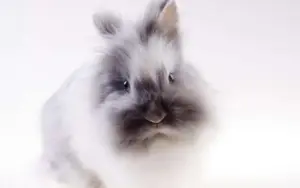Parrots are among the few animals with the remarkable ability to mimic human speech.
They often imitate sounds after hearing humans speak, and some can even bark like dogs, recite poems, sing songs, and engage in back-and-forth conversations, leaving people astonished.
But why do parrots love mimicking human speech? Is it mere imitation, or can they truly communicate with humans? Let’s explore further…
Table of Contents
Why Can Parrots Mimic Human Speech?
Parrots’ ability to imitate human speech stems from their unique vocal anatomy. They possess a specialized vocal organ called the syrinx, which allows them to reproduce a wide range of sounds, including human language.
In daily life, parrots often mimic their owners’ speech to gain attention. Interestingly, when one parrot in a household learns to talk, others may follow suit by imitating both humans and their vocal peers.
Mimicry vs. Communication: What’s the Difference
Mimicking speech and engaging in meaningful communication are two distinct abilities. Simply replicating sounds does not equate to genuine linguistic capability. So, are parrots merely copying sounds, or do they truly understand language?
Consider the famous case of African Grey parrots. Videos of these birds answering questions and interacting with their owners suggest cognitive abilities comparable to a 2–3-year-old child. Dismissing such behavior as “mindless mimicry” seems inadequate, hinting at a deeper level of comprehension.
Thus, parrot mimicry is more complex than mere repetition. With proper training, parrots can develop functional communication skills. Below is a step-by-step guide to fostering this ability:
How to Train Your Parrot to Communicate
Build a Bond
Spend quality time with your parrot to establish trust. A parrot that feels connected to you is more likely to engage and communicate.
Teach Object Recognition Through Play
- Place an object in front of your parrot and repeatedly say its name (e.g., “apple”).
- Reward the parrot with a treat or praise when it correctly mimics the word.
- Gradually introduce compound phrases (e.g., “green leaf”) to teach color and object differentiation.
- Patience is key! This process may take months or even years.
Initiate Simple Conversations
Once your parrot masters vocabulary, start asking questions or prompting interactions. You might be surprised by its responses!
Conclusion
While parrots naturally excel at mimicry, structured training can unlock their potential for meaningful communication. The process demands time and dedication, but the results—a chatty, interactive companion—are well worth the effort.
Who knows? Your parrot might just become your most fascinating conversational partner!









Add comment